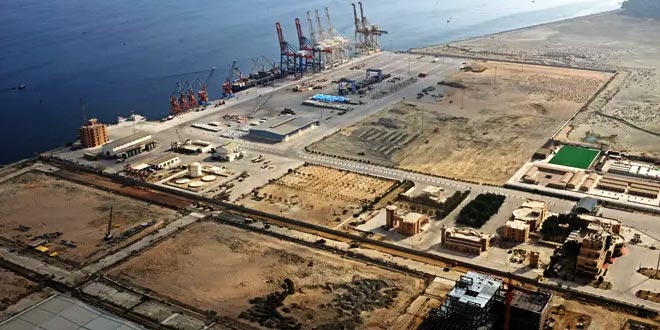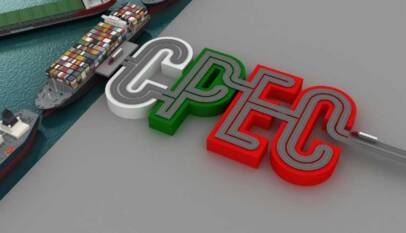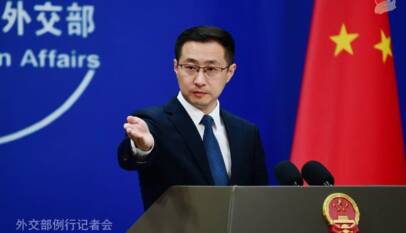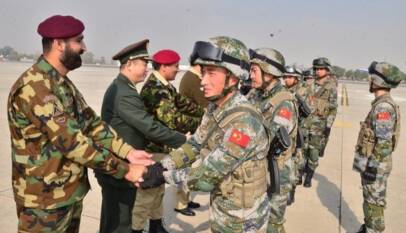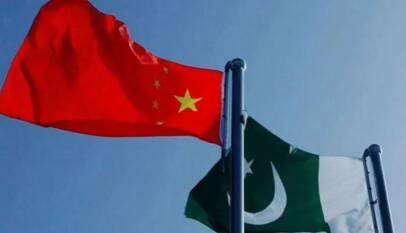CPEC Second Phase To Put Pakistan’s Economy in the Right Direction
ISLAMABAD: With the completion of major infrastructure and energy projects, the first phase of the China-Pakistan Economic Corridor (CPEC), which has helped Pakistan manage huge deficits in the energy sector and transportation infrastructure, is coming to an end.
Before CPEC, Pakistan was going through the worst load on power management and according to the government of Pakistan, the country was losing $4-5 billion every year due to energy shortages, while the estimated cost did not include social costs to society.
On the other hand, the National Highway Authority (NHA) estimated that Pakistan needed $1.2 billion to rehabilitate the transportation infrastructure, which along with the energy shortage, was hindering the country’s fast economic growth.
Pakistan managed to address these major issues with the help of the first phase of CPEC, which is now entering the second phase. Once again, the time is critical as all economic indicators are painting a miserable picture – inflation is on the rise, the rupee has depreciated against the US dollar – and new opportunities are few.
The government is striving to reverse the order and is aggressively pursuing any available opportunity for investment and job creation. The second phase of the economic corridor can be the answer to that, but the question is what strategies and tools are required by Pakistan to benefit from the next phase. Moving forward, there are three points which need to be taken into consideration.
First, the initial phase of CPEC was dominated by infrastructure development. All these interventions needed the lead role of the government, although, with certain reservations, the government managed to play a good role. Secondly, Pakistan should keep in mind the economic and development status of the country before designing any intervention. The first point to recognise here is that Pakistan lies between the primary and secondary phase of economic development, which means the country has started to graduate from commodities or natural resource stage and is trying to enter the second phase.
Although the process is slow, the country is still making progress. Therefore, the future plan should be developed keeping in mind the current status of development.
The second phase is all about industrial cooperation, development of agriculture and trade, therefore, its needs and demands are entirely different from the first phase. The first required the leading role of the government, while the second phase requires a 180-degree change in management and roles of actors. It demands the leading role of industrialist, the private sector and the business community, while the government’s role would be only of a facilitator.
The government needs to start future planning and phasing of implementation for the second part of CPEC, accordingly. In this regard, the government has started to engage the business community of Pakistan by creating a ‘business council’ under the chairmanship of Abdul Razak Dawood. However, the direction of the business council is not clear yet and the terms of reference (ToRs) are not depicting the required changes and instruments for practical interventions.
Business council
It is feared that the council will prove to be just another talk shop without much delivery. For meaningful engagement of the business community, Pakistan will have to adopt a more practical approach and well-thought strategy for engagement.
First of all, the business council should be made an independent body and should have direct linkages with the Prime Minister’s Office and National Development Council. The main work of the council should be to design a comprehensive plan for intervention by the business community and propose a role for the government to accomplish it. Moreover, the council must have the power to monitor the implementation of proposed interventions and lastly, it should not be confused with other government bodies like the CPEC Authority, etc.
Promoting SMEs
Apart from the business council, the government should also design a pathway for the development of small and medium enterprises (SMEs), trade and job creation. This pathway should be developed by engaging the real actors of these sectors and should not be limited to the work of some consultants or bureaucrats.
Inclusion of SMEs would play a prominent role in reversing the economic downfall. Presently, Pakistan’s major exportable products, except textile products, come from SMEs. In the textile sector, Pakistan has already achieved the maximum level of exports, especially in the context of sheer competition from other countries, while the SMEs have a huge potential to exploit. Pakistan can prioritise its joint venture with Chinese or European counterparts. It will help the country attract good investment and give impetus to exports.
Tapping the food industry
In addition, the agriculture-based industry has the potential to immediately provide relief. Urgent steps can be taken to strengthen the supply chain of agriculture and livestock products. It is predicted that the halal food markets will reach the figure of $3 trillion in the coming years. Unfortunately, Pakistan’s share in the halal food market is very low or negligible. Recently, a report predicted that Pakistan can easily capture the $5-6-billion market with relevant strategies.
Moreover, China is also emerging as one of the major importers of food products. Pakistan can also benefit from the Chinese market. To exploit the market, the country needs the best supply chain, certification of products and maintenance of hygiene standards. Owing to limited resources and lack of capacity, the government cannot provide the required facilities except the legal cover.
Therefore, it is advisable that the government assign private sector a leading role and facilitate them. The private sector has resources and a will to invest if the government provides them with a good playing field. The second phase of CPEC provides a good opportunity to engage the private sector and business community to develop joint ventures in this sector.
Some companies from China want to work with Pakistani companies to build supply lines for halal food and export of food to China. These Chinese companies have good experience in maintaining hygiene and quarantine standards, but they need acceptable halal food certification. They also need to venture in new markets in order to build reliable international markets to meet the ever-increasing demand for food in China.
These companies are interested in working with the private sector and are looking to work in an atmosphere that encourages the private sector’s growth. Therefore, it is advisable for Pakistan to create an environment which encourages the lead role of the private sector.
The writer is the executive director of Zalmi Foundation
Chinese Ambassador highlights significance of Third Plenary Session for China-Pakistan cooperation
The Third Plenary Session of the 20th Central Committee of the Communist Party of China ha…



